Conjuring Homelands
Writer and ethnographer Nicole Nfonoyim-Hara responds to Mn Artists Presents: Jovan C. Speller, Choosing Home: A Right, A Privilege or an Act of Trespass, which took place at the Walker Art Center earlier this month.
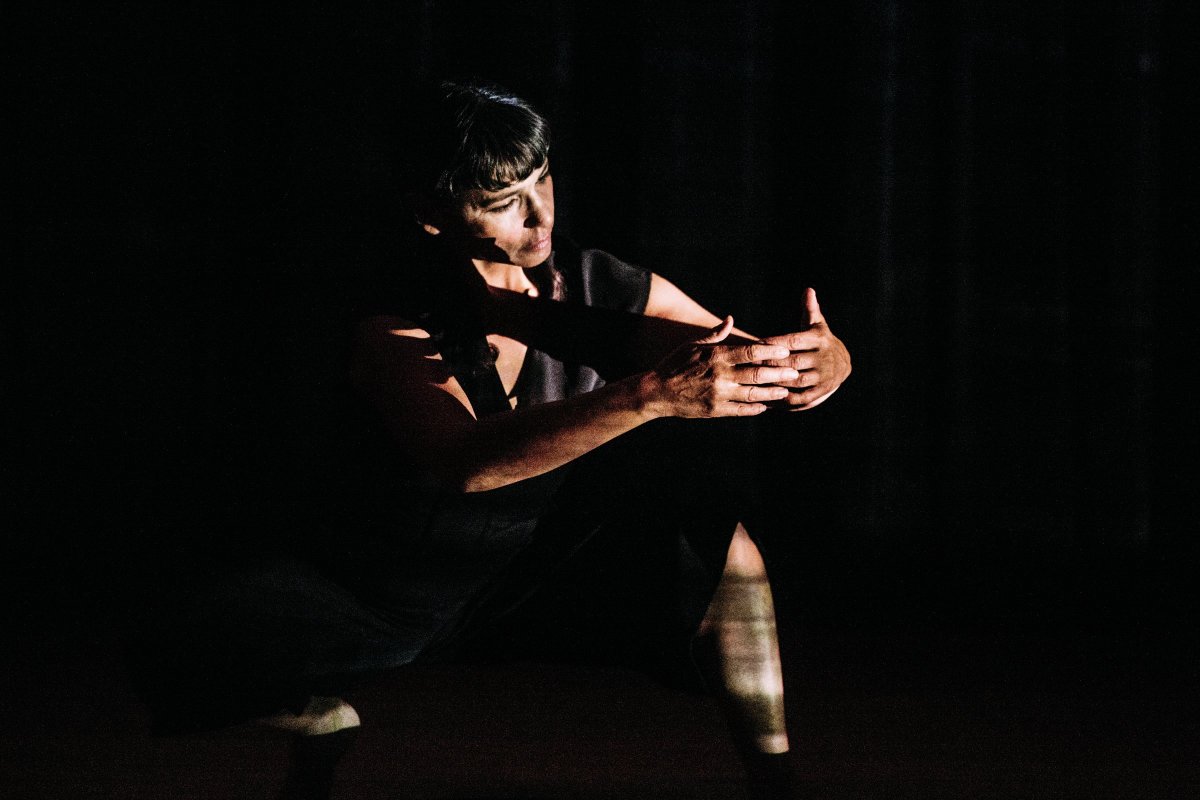
Her lone body carves a place for itself within the gallery walls, crossing borders, oceans, and generations—tracing a path to a place that might be home. When she starts stepping, I remember girlhood dance circles, baby teeth scraping sweetness off mango seeds, the scent of immaculate plaits laced in hair oil, the sound of bubble hair ties clinking together offering their own giddy percussion. I want to step in, responding to the call of her movements and phrases with my own body’s cry-song for home. Three children with curly crowns and brown skin play. Cupping their hands, they peer through the glass wall outside. They grin as if they, too, can see the home-place dancer Alanna Morris-Van Tassel has conjured—its intricate cartography charted with her bare feet.
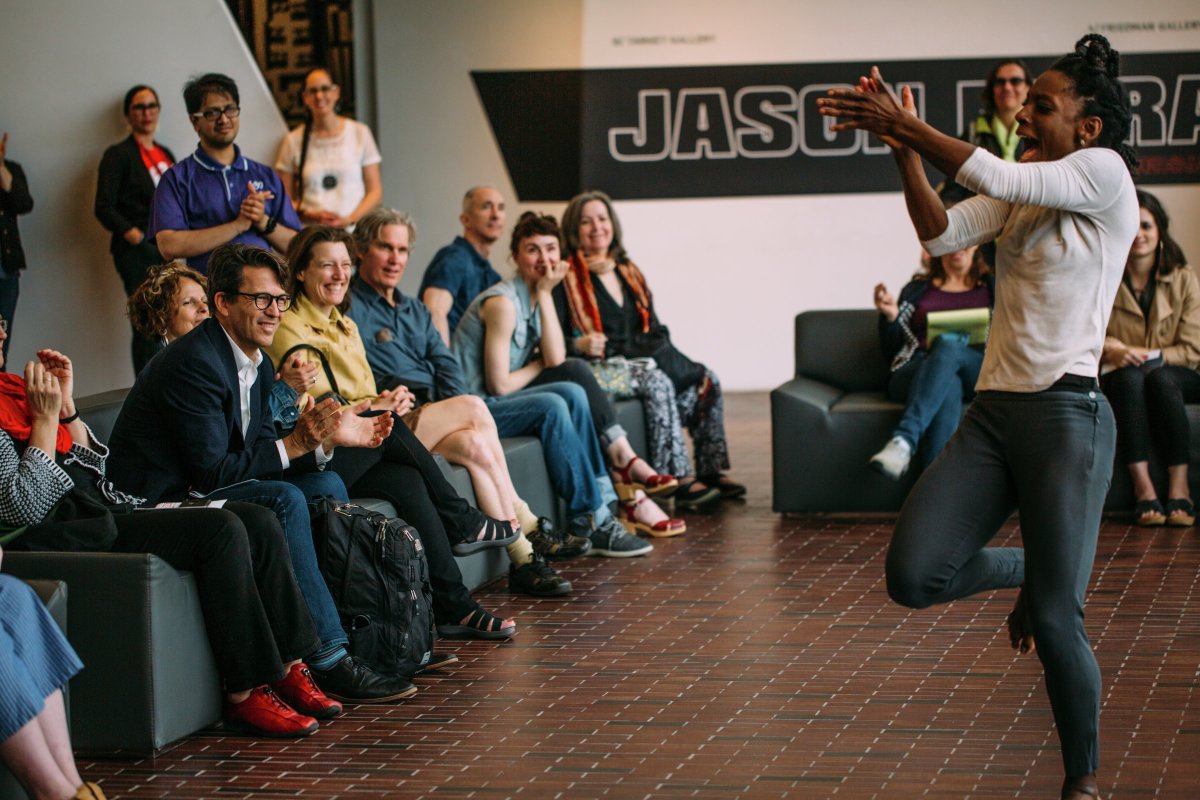
It’s a Thursday night and I’ve come up to Minneapolis from Rochester to see Mn Artists Presents: Jovan C. Speller, Choosing Home: A Right, A Privilege or an Act of Trespass, at the Walker Art Center. Speller along with artist/collaborator Dyani White Hawk, and choreographers Rosy Simas and Alanna Morris-Van Tassel offer an artistic inquiry into the meanings of homeland and belonging, privilege and ownership. The artists come from two unique but inextricably intertwined communities. They are Native and Black artists: White Hawk is Sičangu Lakota, a member of the Rosebud Sioux tribe; Simas is Haudenosaunee (Seneca, Heron Clan); Morris-Van Tassel is the daughter of Caribbean immigrants from Grenada and Trinidad & Tobago; and Speller is African-American, tracing her lineage to North Carolina where her ancestors were once slaves on the Speller plantation. These identities matter. Their “coming together” in this space matters (even though their communities have always been connected). The separation of their joint histories and struggle has been systemic and strategic.
The land still remembers.
It’s the first time I’ve been away from my five-month-old daughter for more than just a couple of hours and I’m oddly displaced. My body too light, unrooted. I’ve become a home-place for someone (even as my own homelands continue to shift beneath my feet) and my body remembers this. Finding my way through the maze of the Walker galleries is disorienting and yet fitting, as the artists lead us through their real and imagined homelands. They claim central space in an institution where indigenous, black, and brown bodies must still demand to speak for and about themselves, and where historical trauma was so recently put on display as a mere spectacle, a play thing. As Native American, African-American, and Caribbean artists, “home” and “homeland” exist as locations and spaces in which struggles against centuries of genocide, enslavement, exile, dispossession, migration, and marginalization mark the landscape. But there is joy here too. I would say “resilience” also. But I’ve grown weary of the way that word gets forced down our throats. Choking all the ways we have always practiced a radical softness, suppleness, an openness as creators, healers, poets, conjurers, world-builders, mythmakers, keepers of living bones, and midwives of spirits.
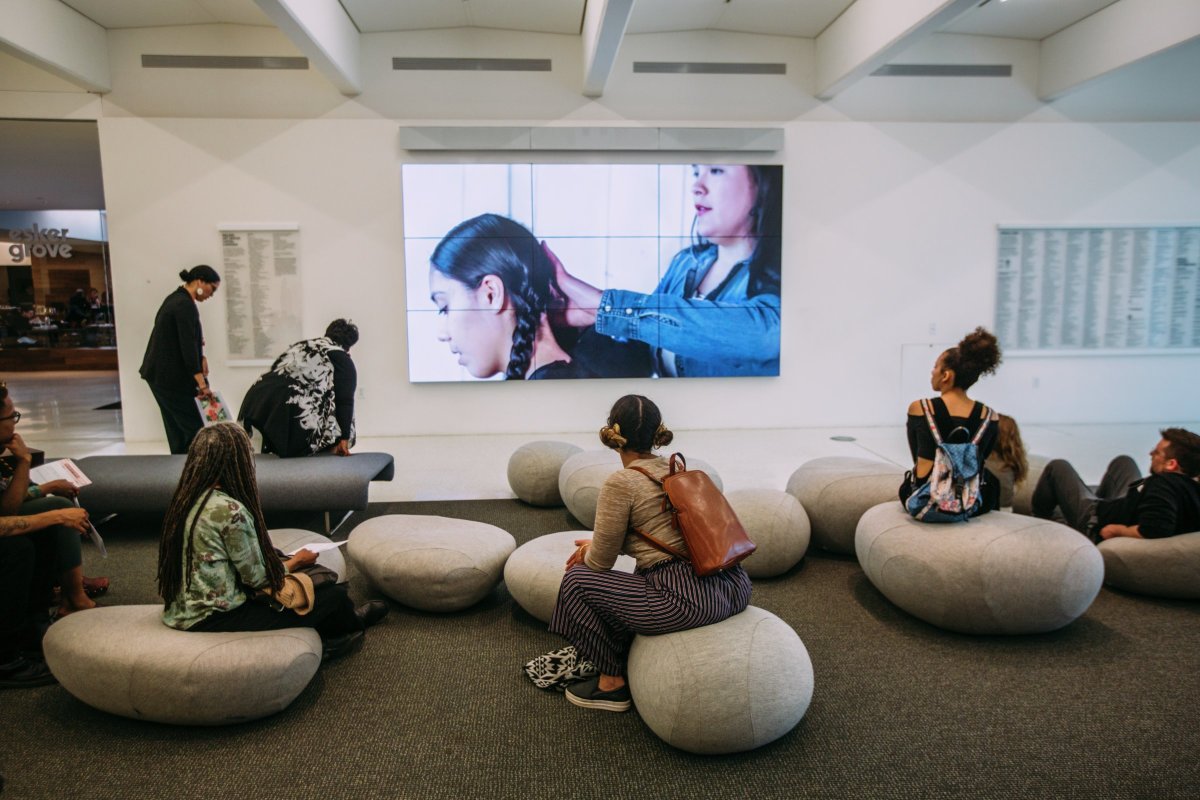
Overhead, I hear the voice of Morris-Van Tassel’s mother, a Caribbean tongue curved toward East Flatbush—a familiar cadence that makes my heart ache. In the short film Braids, a collaboration between Dyani White Hawk, Jovan C. Speller, and Elizabeth Day, the voices of White Hawk and Speller’s mothers, Sandy and Carolyn, weave history, ritual, and belonging into inky braids thick with inheritance. I remember kitchen tables and nimble fingers against my scalp. Through various media, kin and kindred join the artists. They offer their own acts of home-making and home-coming. The artists’ work pulses with the same intimacy, the same interiority even as they call forth the “we”, the collective, the community.
We are still here. We have always been here. Gwen Westerman and Neil McKay sit at a table, speaking the first language of Mni Sota Makoce, a gift from the Creator to the Dakota. They are part of White Hawk’s performance centering the Dakota language and perspective. McKay tells us, “Language has great power. It can give life, or it can destroy.” Westerman reads one of her poems, noting that the Dakota language is so rich that the Dakota-English dictionaries are several times thicker than the English-Dakota ones. The language so expressive it can easily create poetry about astrophysics. In her poem “We Come From the Stars”, she speaks of origins: “We are Wicanhpi Oyate, Star People and will remain here as long as we can see ourselves in the stars.” And I think of the Dakota, and also of the myths of the Dogon of West Africa and of Octavia Butler’s fictional Earthseed… our destiny is to take root among the stars. Time and space collide and collapse. History is not prologue and ancestors are future.
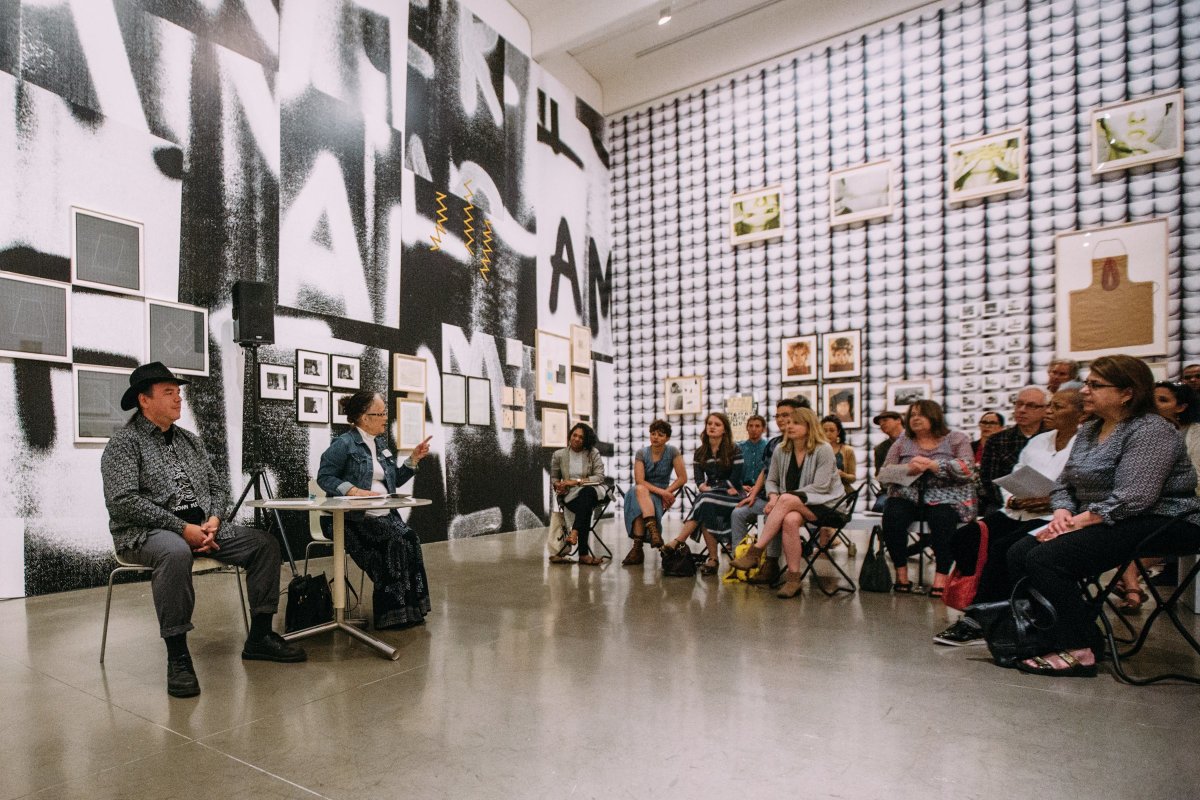
This land remembers. These homelands remember. Native and Black bodies still remember.
The artists’ work forces us to confront why these spaces have to be (re)membered and made visible to begin with. I am struck by the fact that indigenous and black artists and communities seldom share the same space. The event is intentional about making these critical connections. Each artist embodies a living history that trespasses any master narrative misappropriation of the “past”. History is full of silences, myths, and disruptions. Through the dissonance, history as wielded by those in power can smoothly masquerade as “truth” and “fact”. Thus, it becomes an authoritative form of knowledge and a misrepresented source of identity, culture, and even struggle. The master trick of mainstream American history is the illusion of its legibility, its succession of neat chronologies with a parade of blameless and sanitized heroes. Its strategic erasure of Native and Black voices and connectedness is calculated, vital to the ongoing survival of white supremacy.
In her introduction to the panel discussion, Speller explains that the exhibition was inspired by her own exploration into her family history and to land ownership. The “ownership” of land (the word itself sanitized, removed from the sins that made it possible) was only one part of the colonial settler project. Native and black bodies were also owned and turned into property. Between 1492 and 1880 it is estimated that somewhere around 2–6 million Native Americans were enslaved throughout the Americas alongside 12.5 million enslaved Africans.1 The Native slave trade divided Native communities across the east coast colonies and the south, selling enslaved indigenous people throughout colonies in the Caribbean and as far off as Spain and Northern Africa.
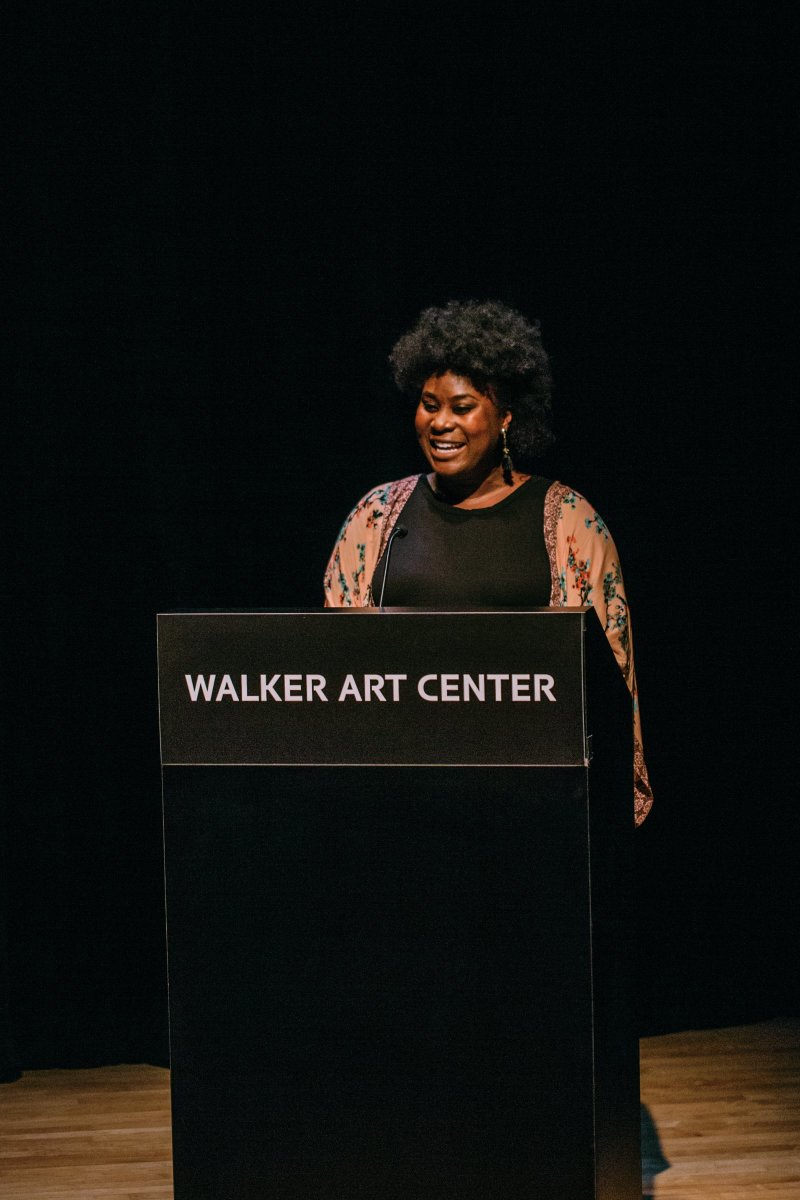
This dual application of ownership to earth and bodies manifests itself in the way the artists’ work is as much about the spatial nature of homelands as it as about the body and the embodiment of homelands. During the artists’ panel, Simas says “My grandmother is like an embryo in my body and the land is like a seed—always in my body.” When reflecting on her mother’s cultural loss when she migrated as a young woman from Trinidad & Tobago, Morris-Van Tassel echoes Simas by saying, “My mom is in me and I’m in my mother.”
Yet even after an evening of bearing witness to each artist’s interrogation of home, they are still asked to explain and even “empathize”. It’s almost too pat, too on the nose—perhaps a performance itself. The first audience question to the panel comes from a white man who feels like his own home has been destroyed by the Trump administration. His entire commentary a case in point about how white privilege (one of many enduring legacies of the settler colonial project of the United States) can’t seem to stop taking up so much damn space. And so I won’t grant it anymore space than I already have here. By interrogating “home” together, the artists are engaged in a transgressive knowledge production, one that speaks into silences in history and interrogates the nature of privilege. But that is not the end or even the most compelling part of their project.
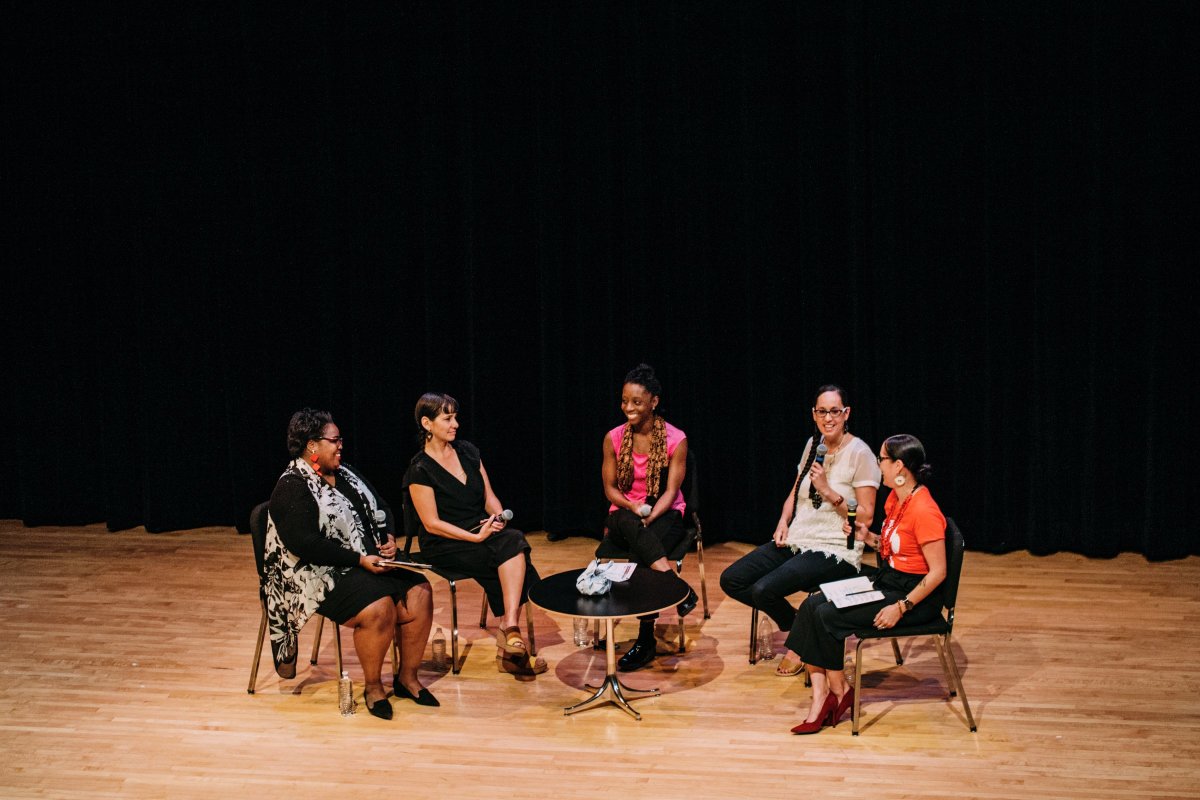
The exploration they offer is less about claiming space vis-à-vis a white master gaze and narrative, but rather an affirmation of what has always been. On the panel, Morris-Van Tassel talks about mining and excavating this thing called “home”, searching for it. By contrast, Simas describes her approach as coming from a place of “knowing”. There’s a generative tension between the Native refrain, “We have always been here,” and the African-American refrain, “Home is not here, yet home is a place I cannot remember and cannot return to.” This searching and this knowing are woven into one another, dependent on each other. Each artist conjures home. They dig their hands deep into the earth to find she remembers. They carry home on their backs, perched on their tongues, birthed inside their very bodies.
This article is published in conjunction with Mn Artists Presents: Jovan C. Speller. The event took place at the Walker Art Center on May 3, 2018, and included work by artists Dyani White Hawk, Alanna Morris-Van Tassel, and Rosy Simas. The panel discussion was moderated by Crystal M. Moten, Ph.D and Sasānēhsaeh M. Pyawasay, Ph.D.
This article was commissioned and developed as part of a series by guest editors Free Black Dirt.